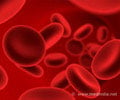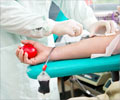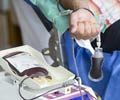About Blood
Blood is the red colored fluid tissue, that incessantly flows through the different parts of our circulatory system. An average human has 5- 6 litres of blood in the body and it comprises of one twelfth of our body weight.
Blood consists of a straw colored, fluid matrix called plasma, 90% of which comprises of water. The cellular elements namely the Red Blood Cells (RBCs) White Blood Cells (WBC) remain suspended in the plasma. Other substances found in the plasma are glucose, proteins, fats, hormones and enzymes.
The RBCs help to exchange oxygen between the lungs and the tissues. These red cells contain a red pigment called hemoglobin which acts as the carrier vehicle for oxygen. The amount of hemoglobin in a healthy male is 14-16 gms while in a female it is 12-14 gms. The WBCs are the main components of the immune system that guard the body. They also function as scavengers and cleanse the body of bacteria or any other microorganisms that enter the body.

Platelets are vital in the process of blood clotting brought about with the help of coagulation factors.
The bone marrow is the prime site of blood cell proliferation. Each day old cells die and are eliminated from the body and each day new blood cells are formed to replenish the stock of blood cells. The life span of RBC is 120 days while the WBC lives for a few days and the platelet for a few hours only.
A person with burn injuries may need only plasma transfusions while a person with anemia may need RBC s alone and a person with clotting problems may need a transfusion with factor VIII or IX.
Plasma can be stored for a year at -80 degrees. Platelets on the other hand can be stored to up to 5 days at 22-24 degrees. Certain coagulation factors such as factor VIII and factor IX can be stored for later use. These are very handy in treating certain disorders, such as Hemophilia. Certain proteins such as albumin and globulin can also be stored.
This is because many patients do not require whole blood. For example, a patient whose hemoglobin is low and is therefore anemic, may just require Packed Cells i.e. only red cells; a patient with burns may need more of plasma than cells; a patient with hemophilia may require only Factor VIII.













